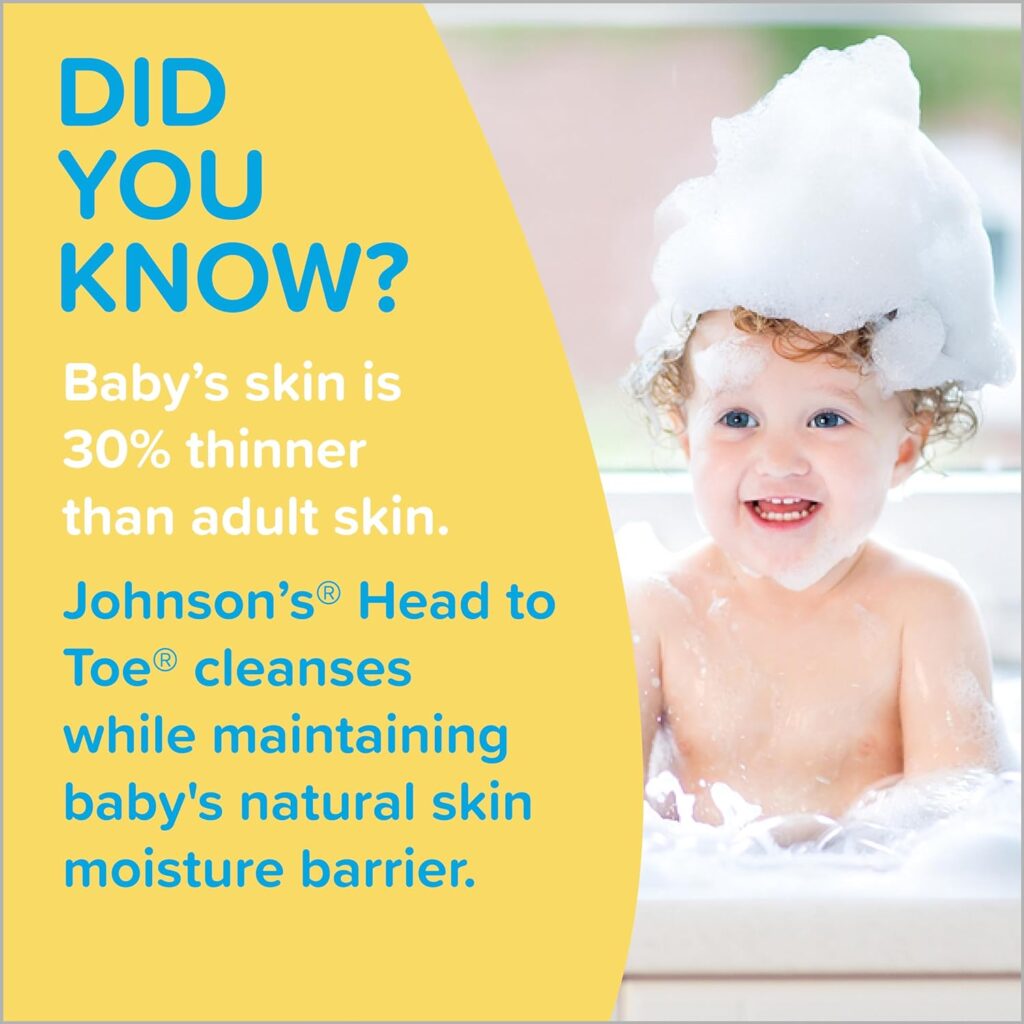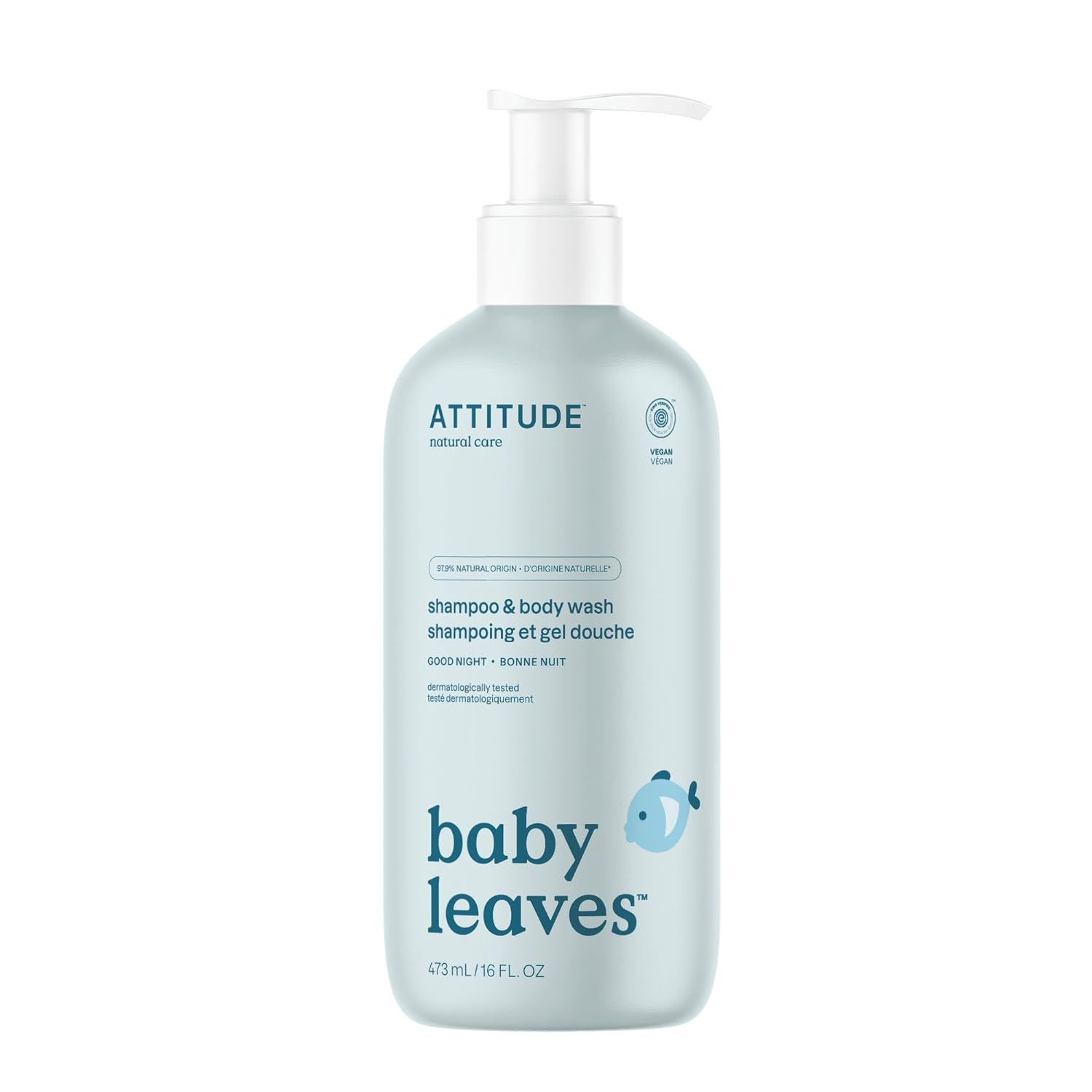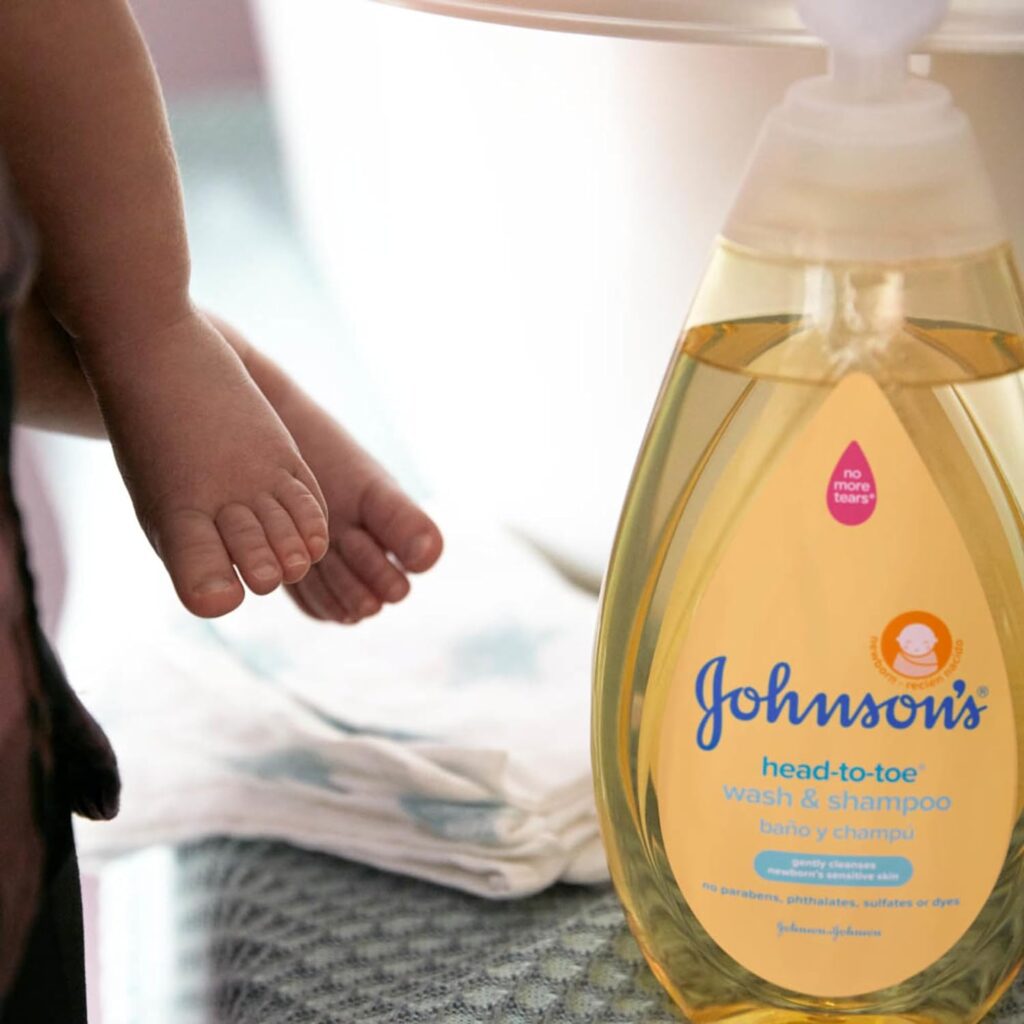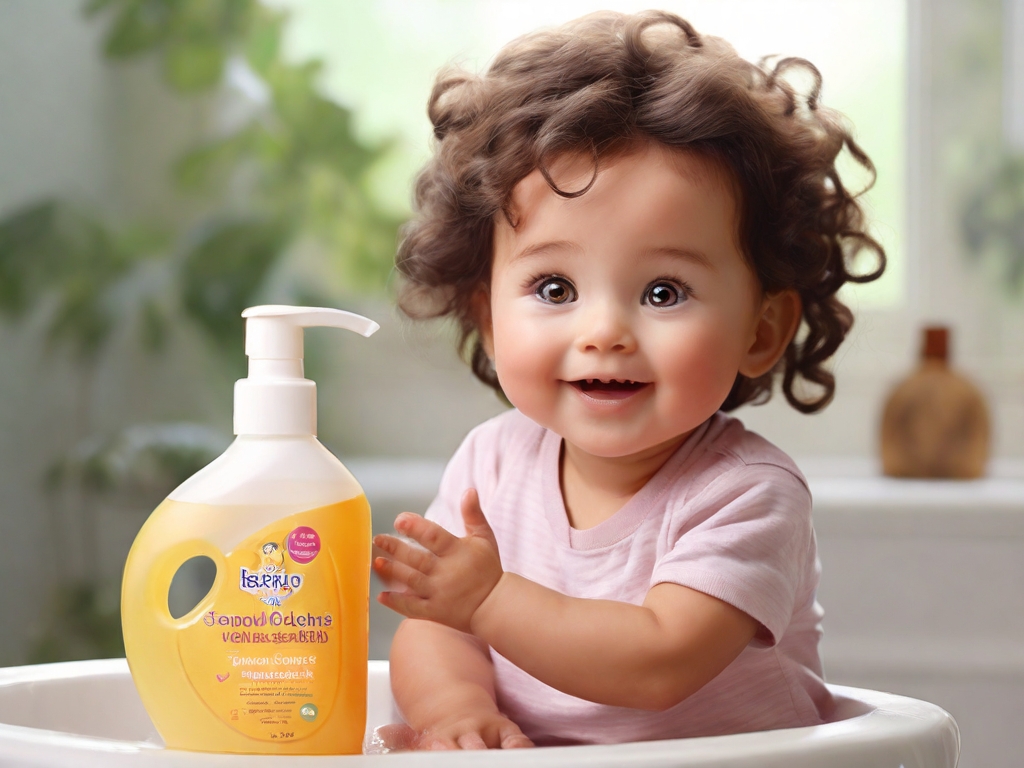Yes, you can use organic baby shampoo on your cat but ensure it’s fragrance-free and gentle. Using baby shampoo on your cat can be a safe and effective way to bathe them.
Can I Use Baby Shampoo on My Cat?
However, it’s important to choose a shampoo that is specifically formulated for sensitive skin and free of harsh chemicals. Baby shampoo can help to clean your cat’s fur without causing irritation. Before using any product on your cat, it’s always best to consult with your veterinarian to ensure it’s safe for your pet’s specific needs.
Introducing a gentle and mild shampoo into your cat’s grooming routine can help keep their fur clean and healthy, while also minimizing the risk of skin irritation or allergies. When bathing your cat, be sure to use lukewarm water and gently massage the shampoo into their fur before thoroughly rinsing.

Why Baby Shampoo May Not Be Safe for Cats
Sensitive Skin Of Cats
Cats have delicate and sensitive skin, which is different from human skin. Using baby shampoo on cats can strip their skin of natural oils and lead to dryness and irritation.
Chemical Ingredients In Baby Shampoo
Baby shampoos often contain fragrances and artificial colors that can irritate a cat’s skin. Additionally, the pH level of baby shampoo is too high for cats, which can cause irritation and discomfort.
Understanding The Specific Needs Of Feline Skin
Understanding the specific needs of feline skin is crucial when considering the use of baby shampoo on your cat. Baby shampoo may not be suitable for a cat’s skin due to differences in pH levels and specific skin requirements. It’s important to consult with a veterinarian to find the best grooming products for your cat’s skin.
Understanding the specific needs of feline skin is crucial when it comes to choosing the right products for your cat’s grooming routine. Feline skin has unique characteristics that differ from humans, and using the wrong products can lead to skin irritation and discomfort for your furry friend.
Unique Ph Balance

Can I Use Baby Shampoo on My Cat?
Cats have a more acidic pH balance in their skin compared to humans. Their skin has a pH level of around 7, while the pH of human skin is closer to 5.5. This difference in pH means that using human shampoos or even baby shampoos, which are formulated for the more alkaline pH of human skin, can be too harsh for a cat’s delicate skin. It can lead to irritation, dryness, and an imbalance in the natural oils that protect their skin.
Less Sebum Production
Unlike humans, cats produce less sebum, the natural oils that keep skin moisturized and healthy. This means that their skin is more prone to drying out. Using the wrong shampoo, particularly one that strips the skin of its natural oils, can further exacerbate this issue. It’s essential to choose a shampoo specifically formulated for cats, with a balanced pH and gentle cleansing properties.
This will help to maintain the natural oils in their skin, keeping it healthy and moisturized without causing irritation or dryness. In conclusion, understanding the unique pH balance and sebum production of feline skin is essential when considering whether to use baby shampoo on your cat. Choosing products specifically designed for the needs of your cat’s skin will help to keep their skin healthy and free from irritation.
Safe Alternatives To Baby Shampoo
Can I Use Baby Shampoo on My Cat?
Looking for safe alternatives to baby shampoo for your cat? You can use gentle, pet-safe shampoos specifically formulated for cats, such as oatmeal or hypoallergenic shampoos. These options are mild and safe for your cat’s delicate skin and coat.
When it comes to grooming your feline friend, using the right shampoo is crucial. While baby shampoo may seem like a gentle option, it may not be the best choice for your cat’s sensitive skin. Thankfully, there are safe alternatives that are specifically formulated for cats and their unique needs.
Cat-specific Shampoo
If you want to ensure the health and well-being of your furry companion, it’s best to use a shampoo that is specifically formulated for cats. These shampoos are designed to be gentle on their skin and coat, while still effectively removing dirt and odors. Look for shampoos that are pH-balanced and free from harsh chemicals or fragrances that can irritate your cat’s skin. Cat-specific shampoos often contain ingredients like Aloe Vera or oatmeal, which can help soothe any irritations or dryness.

Natural And Organic Pet Shampoo
If you prefer a more natural approach, there are a wide variety of natural and organic pet shampoos available that can be a safe alternative to baby shampoo. These shampoos are typically made with all-natural ingredients and are free from synthetic chemicals or artificial fragrances. Look for shampoos that are labeled as “natural” or “organic” and contain ingredients such as coconut oil, chamomile, or lavender, which are known for their soothing properties.
In conclusion, when it comes to bathing your cat, it’s important to choose a shampoo that is specifically formulated for their needs. Cat-specific shampoos and natural and organic pet shampoos are safe alternatives to baby shampoo, ensuring your cat’s skin and coat stay clean and healthy.
Finding The Right Cat-specific Shampoos
If you’re wondering whether baby shampoo is safe for your cat, it’s important to know that cats have different skin and coat needs compared to humans. While baby shampoos may be gentle, they are not formulated specifically for feline care. To keep your furry friend’s coat healthy and clean, it’s best to opt for cat-specific shampoos. These shampoos are specially designed to cater to the unique needs of cats, providing gentle cleansing without drying out their sensitive skin.
Product Recommendations
When choosing a cat-specific shampoo, it’s essential to select one that suits your cat’s individual needs. Below are a few recommendations to help you find the perfect shampoo for your feline companion:
Considering Your Cat’s Individual Needs,Can I Use Baby Shampoo on My Cat?

| Shampoo Type | Benefits |
| Hypoallergenic Shampoos | Designed for cats with sensitive skin or allergies, these shampoos are formulated to minimize irritation and discomfort. |
| Anti-Dandruff Shampoos | If your cat is prone to dandruff, an anti-dandruff shampoo can help alleviate flaky skin and reduce itchiness. |
| Medicated Shampoos | If your cat has a specific skin condition, such as fungal or bacterial infections, your veterinarian may recommend a medicated shampoo to treat the underlying issue. |
| Waterless Shampoos | For cats that despise water or are unable to tolerate baths, waterless shampoos provide a convenient and effective way to keep their coat clean and fresh. |
Remember to consult your veterinarian before introducing a new shampoo to your cat’s grooming routine. They can provide guidance based on your cat’s individual needs and any specific skin concerns they may have. By using a cat-specific shampoo and considering your cat’s unique requirements, you can help maintain their coat’s health and overall well-being.

Benefits Of Natural And Organic Pet Shampoos
Using natural and organic pet shampoos can provide numerous benefits for your furry friend. These shampoos are formulated with gentle and nourishing ingredients that are safe for both the environment and your cat’s delicate skin. Let’s explore the advantages in detail:
Chemical-free Formulations
Unlike conventional pet shampoos that may contain harsh chemicals and artificial fragrances, natural and organic pet shampoos are made without these harmful ingredients. They prioritize the wellbeing of your cat by using gentle and safe formulations that avoid potential skin irritations and allergic reactions.
By opting for a chemical-free shampoo, you can help reduce the risk of exposing your cat to unnecessary toxins and pollutants. This is especially important when considering that cats are meticulous self-groomers and can ingest shampoo residue while cleaning themselves.
Gentle And Nourishing Ingredients
Natural and organic pet shampoos contain ingredients that are not only gentle on your cat’s skin but also nourishing. These shampoos often utilize natural extracts, essential oils, and plant-based ingredients that help maintain a healthy coat and skin.
With the absence of harsh chemicals, the gentle formulations in these shampoos promote a balanced pH level, preventing the stripping of natural oils from your cat’s skin and fur. This ensures that your cat’s coat remains soft, shiny, and well-hydrated.
In addition to being gentle and nourishing, natural and organic pet shampoos are also biodegradable, making them environmentally friendly. By choosing these products, you are not only caring for your cat’s well-being but also contributing to the preservation of our planet.
Precautions When Using Alternative Shampoos
Taking precautions while using alternative shampoos is crucial, especially when it comes to using baby shampoo on your cat. Ensure it’s gentle, hypoallergenic, and free of harmful chemicals, and consult with a veterinarian before proceeding.
Avoiding Essential Oils
When it comes to using alternative shampoos for your cat, one important precaution to keep in mind is to avoid using products that contain essential oils. While essential oils are often used in natural shampoos and products for humans, they can be harmful to cats. Cats have a different metabolism than humans and are more sensitive to certain substances, including essential oils. Some essential oils, such as tea tree oil and lavender oil, can be toxic to cats and may cause skin irritation, allergies, or even internal damage if ingested. It’s best to choose a shampoo specifically formulated for cats to avoid any potential risks associated with essential oils.
Proper Dosing And Rinsing
Another important precaution when using alternative shampoos on your cat is to ensure you are using the correct dosage and rinsing thoroughly. A common mistake people make is using too much shampoo or not rinsing it out properly. Cats groom themselves by licking their fur, and if there is any residue left on their coat from shampoo, it can be harmful if ingested. To prevent this, always follow the instructions on the shampoo bottle and use the recommended amount. Additionally, make sure to rinse your cat thoroughly after shampooing to remove any leftover residue.
Proper dosing and rinsing are essential to ensure your cat’s safety and prevent any potential negative effects from alternative shampoos. To summarize, when using alternative shampoos on your cat, it’s important to take certain precautions to ensure their safety and well-being. Avoid using products with essential oils, as these can be harmful to cats. Always follow the recommended dosing instructions and rinse your cat thoroughly to remove any residue. By being cautious and mindful, you can keep your feline friend clean and healthy without compromising their health.
Understanding The Cat Bathing Process
Bathing your cat requires special attention, and using baby shampoo may not be the best choice. Discover the cat bathing process and understand why baby shampoo might not be suitable for your feline friend.
Understanding the Cat Bathing Process Preparing the Bathing Area Before bathing your cat, set up a cozy and comfortable bathing area. Choose a quiet and warm room with no drafts. Place a rubber mat or a towel in the bottom of the sink or tub to provide traction and make your feline friend feel secure. Gentle Handling and Techniques When handling your cat during the bathing process, be extra gentle and calm. Start by brushing your furry friend to remove tangles and excess hair.
Use a gentle touch and soothing voice to reassure your cat during the process. Next, gently place your cat in the water, ensuring the water is lukewarm. Avoid getting water in your cat’s ears and eyes. Use a mild cat shampoo and lather it gently onto your cat’s coat, avoiding the face. Rinse thoroughly to remove all traces of shampoo. After the bath, wrap your cat in a towel and gently dry them. Reward your cat with treats and praise to create positive associations with bath time. Overall, when bathing your cat, the key is to be patient and gentle, making the experience as stress-free as possible for your furry companion.

Introducing Cats To Bathing
Introduce your cat to bathing with care. While baby shampoo may seem gentle, it’s best to use feline-specific shampoo to ensure their skin’s pH balance is maintained.
Cats are known for their independent nature, often grooming themselves with their tongue and paws. However, there are times when introducing them to bathing becomes necessary, such as when they’ve encountered a mess they can’t clean themselves. Many cat owners wonder about the compatibility of using baby shampoo on their feline friends, which is a valid concern, considering cats groom themselves by licking their fur. When it comes to bathing your cat, it’s essential to approach the process with patience and care.
Using the right techniques and products can make the experience less stressful for both you and your cat. Positive Reinforcement Bathing a cat can be a challenging task, and it’s crucial to approach it with a positive attitude. Cats respond well to positive reinforcement, so make the bathing experience enjoyable by offering treats or praise. This will help create a positive association with the bath and make future bathing sessions less stressful.
Step-by-step Guide To Bathing Your Cat
Bathing your cat can be a challenging task, but with the right techniques and supplies, it can be a stress-free experience for both you and your feline friend. In this step-by-step guide, we will walk you through the process, from gathering supplies to rinsing and drying, ensuring that your cat stays clean and healthy. So let’s get started!
Gathering Supplies
- Prepare a warm, comfortable space: Find a quiet area in your home with good lighting where you and your cat can feel relaxed during the bath.
- Gather essential supplies: You will need a non-slip mat or towel for the bottom of the sink or bathtub to keep your cat secure. Have a cat-friendly shampoo ready, preferably one specifically formulated for feline use. Additionally, gather a couple of towels, a brush, and treats for rewards.
- Trim your cat’s nails (if necessary): Trimming your cat’s nails before a bath can help prevent accidental scratches during the process. Take caution and be gentle.
Wetting And Lathering
- Introduce your cat to water gradually: Cats are known for their aversion to water, so start by wetting your hands and gently massaging their fur to get them used to the sensation.
- Adjust the water temperature: Make sure the water is warm, but not too hot, as cats are more sensitive to temperature than humans. Use your elbow to test the water before wetting your cat.
- Wet your cat’s body thoroughly: Gradually wet your cat’s body with a handheld sprayer or by pouring warm water over them. Keep the water pressure low to avoid scaring or startling your cat.
- Apply a small amount of cat-friendly shampoo: Avoid using baby shampoo or human shampoo, as they can be harsh on your cat’s skin. Gently massage the shampoo into their fur, focusing on the areas that need cleaning, such as the belly or paws.
Rinsing And Drying
- Rinse thoroughly: Use the handheld sprayer or carefully pour warm water over your cat to remove the shampoo. Ensure all soap residue is washed away, as it can irritate their skin.
- Be patient and calm: Cats may become anxious during the rinsing process, so reassure them with soothing words and gentle handling.
- Dry your cat with towels: Wrap your cat in a towel and gently pat them dry, absorbing as much moisture as possible. If your cat tolerates it, you can use a blow dryer set on a low heat and low noise setting at a safe distance.
- Give treats and praise: After the bath, reward your cat with treats and praise to associate the experience with positive reinforcement. This will help make future baths easier.
Alternative Methods For Cleaning Cats
Cleaning your cat is an essential part of maintaining their hygiene, especially if they have a habit of getting into messes or have skin conditions. While baby shampoo may not be suitable for cats, there are other alternative methods for keeping your feline friend clean and fresh. These methods are safe and effective, ensuring that your cat stays healthy and comfortable.
Waterless shampoos are a great option for cats who don’t enjoy getting wet or are unable to bathe regularly. These shampoos are designed to be used without water, making them convenient and easy to use. They come in the form of sprays or foams, which you can apply directly to your cat’s fur. Massage the product into their coat, focusing on areas that need cleaning. Then, use a towel or brush to remove any residue. Waterless shampoos are specifically formulated to remove dirt, oils, and odors, leaving your cat’s coat clean and fresh.
Wipes are another option for keeping your cat clean between baths. These are specially made for cats and are pre-moistened with a gentle cleanser. You can use wipes to clean your cat’s fur, paws, and even their ears. Simply take a wipe and gently wipe the targeted area, making sure to avoid sensitive areas like the eyes and mouth.
| Benefits of using wipes: |
| – Quick and convenient |
| – Helps remove dirt and allergens |
| – Refreshes the coat and leaves a pleasant scent |

Regular brushing is not only important for minimizing shedding but can also help keep your cat’s coat clean. Brushing removes dirt, debris, and loose hair, preventing mats and tangles from forming. Choose a brush suitable for your cat’s fur type, and gently brush their fur in the direction of hair growth. Brushing can also provide a bonding experience between you and your cat, promoting relaxation and reducing stress.
Importance Of Regular Maintenance And Grooming
Regular maintenance and grooming is essential for the well-being of your cat. However, it is not recommended to use baby shampoo on cats as their pH levels are different. Consult with a veterinarian to find the right shampoo for your feline friend.
Maintaining a regular grooming routine for your cat is essential for their overall health and well-being. Just like humans, cats require proper care to keep their fur, skin, and overall appearance in top shape. Regular maintenance and grooming help prevent matting and tangling, as well as ensure the health of their skin and coat. By dedicating time to these activities, you can keep your feline friend looking their best and minimize the risk of potential health issues.
Preventing Matting And Tangling
Matting and tangling of a cat’s fur can occur if it is not adequately groomed. These tangles can become painful for your cat and hinder their mobility. Regular brushing and combing help remove any loose hairs and prevent them from forming knots and tangles. Use a cat-specific comb or brush, suitable for your cat’s hair length and texture. Taking the time to brush your cat’s fur helps distribute natural oils, improve blood circulation, and even prevent hairballs. Keeping your cat’s fur free from matting and tangling ensures they are comfortable, happy, and able to move freely.
Monitoring Skin And Coat Health
Monitoring your cat’s skin and coat health is crucial to their overall well-being. Regular maintenance and grooming allow you to closely inspect their skin, looking out for any signs of irritations, allergies, or infections. Excessive scratching, redness, flakes, or dry patches can indicate an underlying issue that needs attention. Regular grooming also helps keep your cat’s coat clean, removing any dirt, debris, or parasites that may be present. Furthermore, grooming stimulates the production of natural oils, promoting a healthy and lustrous coat.
By carefully monitoring your cat’s skin and coat during grooming sessions, you can address any concerns promptly and ensure their health remains top-notch. To summarize, regular maintenance and grooming play a significant role in your cat’s overall health and well-being. Preventing matting and tangling of their fur, as well as monitoring their skin and coat health, are essential aspects of this routine. By investing time in these activities, you can keep your feline friend looking and feeling their best while also addressing any potential issues before they escalate.
| 1. | Regular maintenance and grooming prevent matting and tangling of your cat’s fur. |
| 2. | Brushing and combing help prevent hairballs, improve blood circulation, and distribute natural oils. |
| 3. | Grooming allows you to monitor your cat’s skin and coat health for any signs of irritation or infection. |
| 4. | Regular grooming keeps your cat’s coat clean and stimulates the production of natural oils. |
| 5. | By maintaining a regular grooming routine, you can address any concerns promptly and ensure your cat’s well-being. |
Consulting With A Veterinarian
When considering using baby shampoo on your cat, it’s crucial to consult with a veterinarian. They can provide personalized advice and recommend suitable products to ensure your cat’s safety and well-being. Consulting with a veterinarian is the best way to address any concerns about using specific products on your cat’s delicate skin and coat.
When it comes to the well-being of our beloved feline friends, it’s crucial to consult with a veterinarian regarding their specific needs. While baby shampoo may seem safe and gentle, it’s essential to understand that cats have different requirements compared to humans. A professional veterinary opinion is invaluable to ensure we are making the best decisions for our cats’ health.
Specific Cat Health Concerns
Cats have unique physiological characteristics that require careful consideration when choosing grooming products. Their fur and skin are delicate and sensitive, and using the wrong shampoo can lead to adverse effects. It’s important to remember that cats are prone to allergies and other skin conditions. Some specific health concerns to discuss with your veterinarian regarding using baby shampoo on cats include:
- Possible irritation or allergic reactions, as cats can be sensitive to the fragrance or ingredients in baby shampoo.
- Risk of dryness or excessive oil removal, as cat skin requires a certain level of natural oils for optimal health.
- Disruption of the pH balance, as cats have a different pH level compared to humans, and baby shampoo may not be suitable for maintaining this balance.

Professional Guidance
The guidance of a veterinarian is essential to navigate through the sea of cat grooming products and make informed decisions. Consulting with a professional can provide valuable advice on safe and effective shampoos specifically formulated for cats. They can recommend products that address any underlying health conditions or concerns while keeping your cat’s skin and coat in impeccable condition.
Remember, your veterinarian is the expert in feline health and can provide personalized recommendations based on your cat’s individual needs. They can also offer guidance on proper bathing techniques and frequency to maintain your cat’s cleanliness and well-being.
Ultimately, consulting with a veterinarian is the best course of action when deciding whether to use baby shampoo on your cat. Their expertise will help you make an informed choice that prioritizes your cat’s health and happiness.
Frequently Asked Questions For Can I Use Baby Shampoo On My Cat?
Can I Use Baby Shampoo On My Cat?
Unfortunately, using baby shampoo on your cat is not recommended. While it may be gentle for human babies, it can disrupt the pH balance of your cat’s skin, leading to dryness and irritation. It’s best to use a shampoo specifically formulated for cats to keep their coat and skin healthy.
Conclusion
To conclude, using baby shampoo on your cat may seem like a convenient option, but it is not recommended. Cats have different skin pH levels than humans, so using a gentle, specifically formulated cat shampoo is essential. Opting for products made for feline companions ensures their skin stays healthy and moisturized, preventing any potential irritation or allergies.
Remember to always consult with a veterinarian before trying any new grooming products for your furry friend’s well-being.







